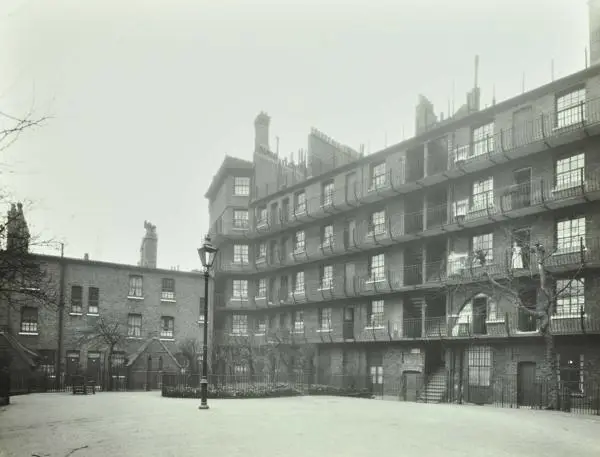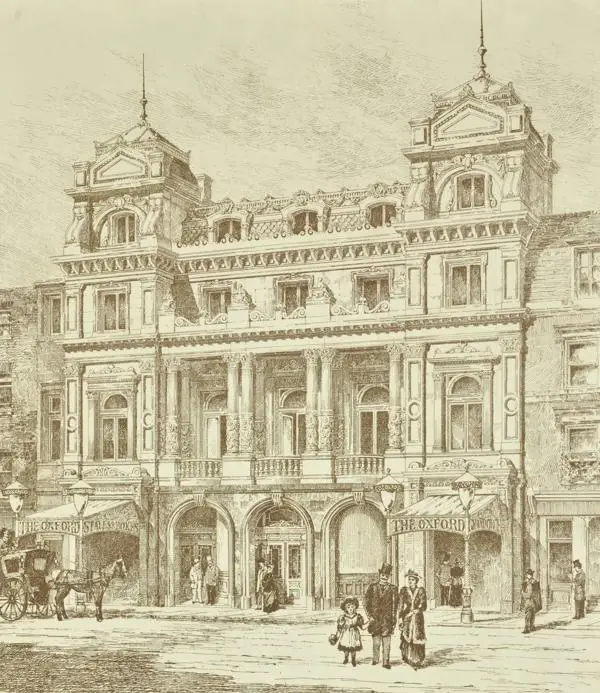Sayings of the Oracle
Guy Baker reveals some of the secrets of London Metropolitan Archives’ very own Oracle.
Oracle is an information database compiled by LMA’s Public Services team for the use of all staff to help with answering queries. Currently ORACLE has well over 2000 entries including references to famous people in the archives, entries about particular themes or topics, relevant information about other archives and their holdings, addresses of institutions, books or journals of use for background and further reading, links to useful websites, events, places, contemporary terminology that people may have come across, and old occupations that may not be familiar.
Researching London Death Rates?
We recently had an enquiry about death rates. For these it might be best to start by looking at the London Medical Officer of Health reports online at the Wellcome Library website (to which we at LMA contributed a large number). The website says 'The reports were produced each year by the Medical Officer of Health (MOH) of a district and set out the work done by his public health and sanitary officers. The reports provided vital data on birth and death rates, infant mortality, incidence of infectious and other diseases, and a general statement on the health of the population.' Within our Library holdings at LMA we have a complete series of 'London Statistics' reports, produced by the London County Council. These include tables with statistics for the number of deaths in London and tables with a breakdown of those who died into different age brackets (for example, deaths under 1 year, between 1 and 5, between 5 and 10, etc.). These volumes have our Library references 31.6 LCC.
South London Industrial Dwellings
South London Industrial Dwellings were at 54-64 Kennington Road, Lambeth, near Waterloo railway station. Also known as Surrey Lodge Dwellings or South Lambeth Dwellings, these stood on the corner of Lambeth Road and Kennington Road. They were built c1880 for the South London Dwelling Company to the designs of Mr E. Hoole. The dwellings replaced Surrey Lodge, which was for years the official residence of the Clerk of the Peace for the county of Surrey, and once the home of Sir James Wyatt. The Industrial Dwellings were a complex of model dwellings founded by Emma Cons, the social reformer who had close associations with Morley College and The Old Vic. Cons and her niece Lilian Baylis lived in two of the cottages, numbers 5 and 6 Morton Place. Cons ran the building personally and in addition to housing, the building included a sanatorium, library, evening classes and day nurseries. The building was badly damaged by a V2 rocket on the 4 January 1945, killing 39 or 43 people (accounts vary). The surviving section on the Crosser Street corner was demolished and a students' hall of residence built in 1981, which was converted into a Days Inn hotel in the late 1990s. In turn that was demolished, and the site redeveloped as another hotel and other business premises.

The meaning of MEOT
The initials M.E.O.T or MEOT often appear in parish registers and other historic documents. This is short for Mile End Old Town. According to the Oxford Dictionary of London Place Names (D. Mills, 2000) 'In around 1691 Mile End became known as Mile End Old Town because a new unconnected settlement to the west and adjacent to Spitalfields had taken the name Mile End New Town.'
This won’t escape your attention
There is a reference to legendary escapologist Harry Houdini in the London County Council Presented Papers for the Oxford Music Hall, 28 November 1908 (LCC/MIN/10869). Later in the minutes (17 December) it states that the inspector took particular note of the performance of Houdini, the 'Handcuff King' and reported that there was not any statement with reference to the treatment of lunatics.

The house where 'George' lived
LMA has a printed photograph of George Eliot’s (the pen name of Mary Ann Evans) house at The Priory, 21 North Bank, Regents Park (SC/PZ/SM/01/170). She lived there between 1864 to 1880. She resided at The Priory with George Henry Lewes until her marriage to John Cross, seven months before her death. The Priory is closely associated with the writing of Felix Holt, Middlemarch and Daniel Deronda. She held her famous Sunday 'at homes' there which were attended by most of the literary celebrities of the time.
A tribute to Mary Wollstonecraft
Mary Wollstonecraft is widely considered to be one of the pioneers of modern feminism.
In November 2020 ‘A Sculpture for Mary Wollstonecraft’ was unveiled on Newington Green, north London, opposite the Unitarian Church that she attended. It’s fair to say that the design, by artist Maggi Hambling, caused a certain amount of discussion and controversy.
At LMA we have records of her baptism (20 May 1759 at St Botolph, Bishopsgate), her (‘unconventional’) marriage to 'the father of anarchism' William Godwin (29 March 1797 at St Pancras), and her burial (15 September 1797 at St Pancras).
She died days after the birth of her second daughter Mary, who is probably best known now as the writer of ‘Frankenstein; or, The Modern Prometheus’ published in 1818. We have her marriage to the great poet Percy Bysshe Shelley (at St Mildred Bread Street on 30 December 1816).
Westminster Bridge Road – where the modern British circus was born
On his discharge from the army in 1766, cavalryman Philip Astley moved to London where he presented feats on horseback on a roped-off piece of land near Westminster Bridge. With large numbers of cavalrymen returning to England, Astley had his pick of skilled performers, and he saw an opportunity to create something unique. The secret to Astley's success was bringing a wide array of professional performers - clowns, acrobats and jugglers found in fairs and marketplaces - within a circular ring. In doing so, he laid the foundations for the circus as we know it today.
Two years after his first performance, Astley swapped his roped-off piece of land for a 42-foot arena, housed in an increasingly elaborate amphitheatre on a triangle of ground between Westminster Bridge Road, Lambeth Palace Road and Stangate. Numerous amphitheatres were opened across Europe, all with horse acts as their driving force, but incorporating other types of entertainment, including dog acts, rope walking, juggling and acrobatics, all with musical accompaniment. Edward Brayley described the amphitheatre in his 1826 work “Historical and Descriptive Accounts of the Theatres of London”: ‘The stage, which is probably the largest and most convenient in London, is provided with immense platforms, or floors, rising above each other.’ Nothing now remains of Astley's London amphitheatre, which was demolished in the 1890s.
Professor Leith Davis at Simon Fraser University, British Colombia, Canada has created a searchable database of newspaper advertisements listing the featured acts at Astley’s from 1768-1833 held at the British Library. Visit the project website for more information.
Louisa Aldrich-Blake pioneer
Dame Louisa Brandreth Aldrich-Blake was born in 1865, the daughter of the rector of Chingford, Essex. From an early age, she showed a natural gift for healing; when eight years old she organised an animal hospital and friends brought their sick and wounded pets for Louisa's attention. Her family was well-connected, and she need not have worked for a living, but she decided to enter the demanding world of medicine.
Graduating from the London School of Medicine for Women in 1893, she went on to take the University of London's higher degrees in Medicine and Surgery, becoming the first woman to obtain the degree of Master of Surgery. Throughout her career, Louisa Aldrich-Blake was associated with the Elizabeth Garrett Anderson Hospital, becoming a surgeon in 1910. At the Royal Free Hospital, she was the first woman to hold the post of surgical registrar and also acted as an anaesthetist. During the years of the First World War, many of the male surgical staff of the Royal Free went on foreign active service and Louisa took increased responsibility for the surgery, becoming consulting surgeon to the hospital. Louisa was a bold, meticulous and very successful surgeon, with great management and diagnostic skill. She was the first in Britain to perform operations for cancer of the cervix and rectum. Louisa Aldrich-Blake became Dean of the London (Royal Free Hospital) School of Medicine for Women in 1914, and exercised an important influence on generations of women medical students. The climax of her career came in 1924 when, in the jubilee year of the medical school, she was made a Dame Commander of the Order of the British Empire. She died in 1925 and is remembered as a brilliant surgeon and wise administrator.
We hold some records relating to her under collection reference H72/LAB. The records consist of photographs of Aldrich-Blake, mostly from her time as Dean, and material relating to her funeral and memorial statue in Tavistock Square Gardens, London. Under reference H71/RF/B/02/02 we also hold some records described as "Miss Louisa Aldrich Blake's Patient Case Note Books" covering 1917-20.
The Man from U.N.C.L.E. at LMA
ACC/3816/04/02/215 at LMA is an album of photographs from the Hampstead Garden Suburb Play and Pageant Union. It includes two photographs of David McCallum, known as Keith here, in the role of Oberon, King of the Fairies in “A Midsummer Night’s Dream” in 1950 when he was just 17 years old. He later starred as Ilya Kuryakin in the TV series The Man from U.N.C.L.E.